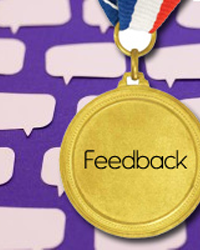 Tom LaTour is the CEO of a chain of American boutique hotels which has expanded from a small regional group to a nationwide chain now owning 38 properties across 16 cities.
Tom LaTour is the CEO of a chain of American boutique hotels which has expanded from a small regional group to a nationwide chain now owning 38 properties across 16 cities.
Once a year, LaTour personally conducts a wine tasting class in each of his hotels. While he plies guests with Chardonnay, he asks them where else they travel regularly. “It’s a great way to find out where we might want to open up a new property,” he says.
Of his daily duties LaTour cites only three:
a) Review revenue targets
b) Manage people
c) Call 8-10 customers
Companies such as this behave like Olympic athletes when it comes to focusing on customer feedback. Customer feedback drives their marketing strategies, service expansion, training plan and venue development. We have put together a few golden rules to get you started on your Olympic path but they are by no means exhaustive and need be used in line with a host of feedback tools:
- Rule # 1: Believe that customers know what they want and sometimes possess good ideas
- Rule # 2: Focus on continual improvement throughout the venue
- Rule # 3: Train ALL staff to handle customer feedback appropriately
- Rule # 4: React rapidly to issues raised by customers- don’t let them leave your venue without a solution
- Rule # 5: Tell your customers how their feedback directly contributed to your changes
Unfortunately the opposite approach is true for many hospitality venues who wait for the feedback, usually in the form of a complaint to arrive of its own accord. Research has found that for every person who complains, there are 26 who do not.
For example: If you had 100 covers for dinner service and the bread rolls were mouldy. If only 1 person complained to your staff, there would be another 26 people that would have quietly just walked out the door possibly never to return.
While those customers may have walked out of your venue quietly, you can be sure that they will have relayed their experience to their friends and of course there is always the possibility that they will update their Facebook status to something in the order of “Just had the worst meal at XYZ Club – thanks for the food poisoning #gross #lostcustomer”
If the statistics are correct, and let’s say 5 of the 26 people have posted online and the average person now has approximately 130 facebook friends, well this is starting to get a bit out of hand isn’t it?
To know what customers are thinking, we must provide feedback processes with an array of access points for customers to provide their ideas and sometimes just have a good old-fashioned rant. The more tools you give them, the less chance you will end up as someones latest tweet or angry online review. This could include multiple tools such as:
- In person or via phone – get your staff asking for feedback
- Website feedback tools
- Customer surveys
- Point-of-purchase feedback cards
- Customer focus groups
- Independent customer and member research tools
- Online review sites
If you would like to discuss your customer feedback options and achieve that gold medal, please contact Samantha Litfin.



